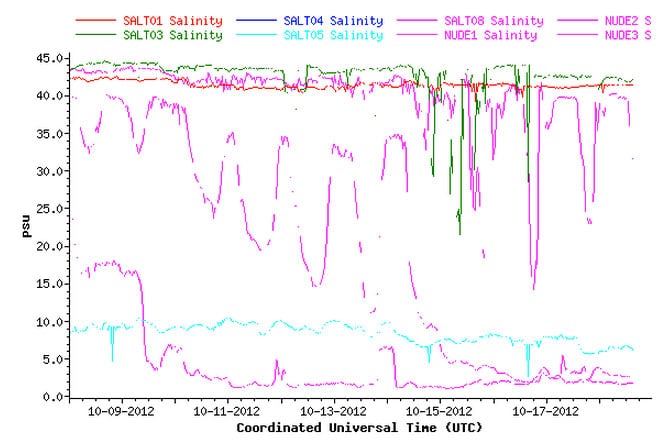
Nueces Bay, Texas is too salty for marine life and fish. That’s according to researchers from Texas A&M, Corpus Christi, who test salinity levels in the Bay on a regular basis.
“The latest salinity value was about 41 [parts per thousand],” said Larry Lloyd, a researcher from Texas A&M Corpus Christi’s Conrad Blucher Institute. Lloyd was speaking with Rachel Cole of KRIS-TV in Corpus Christi. “The only thing that can counter-act that is heavy rain, and even though we’ve gotten some rain recently, the salinity is still way above average.”
The natural flow of fresh water from the Nueces watershed into Nueces Bay was reduced when the Choke Canyon Reservoir was built in 1985. The City of Corpus Christi and the Division of Nearshore Research (DNR) monitor salinity levels in the Nueces Estuary, alerting management action when freshwater movements into Nueces Bay do not mimic natural flows.
Popular recreational fishing species, such as seatrout, could be affected if the salinity levels do not decrease. Seatrout inhabit waters with a salt content ranging from 0.2 to 77 parts per thousand (ppt), according to the US Fish and Wildlife Service. But abrupt salinity changes could cause movement of fish out of the high-salinity areas. According to past lab studies, seatrout spawning does not occur in Texas waters higher than 45 ppt. On Wednesday, Oct. 17 salinity levels reached as high as 42.7 ppt.
The recent drought conditions have been the main cause of the increase in salt content. Lloyd and his team are recommending that the City of Corpus Christi release fresh water into the bay from the Nueces River, reports KRIS-TV. “They’ll release fresh water as long as there’s fresh water available for release,” Lloyd said.









